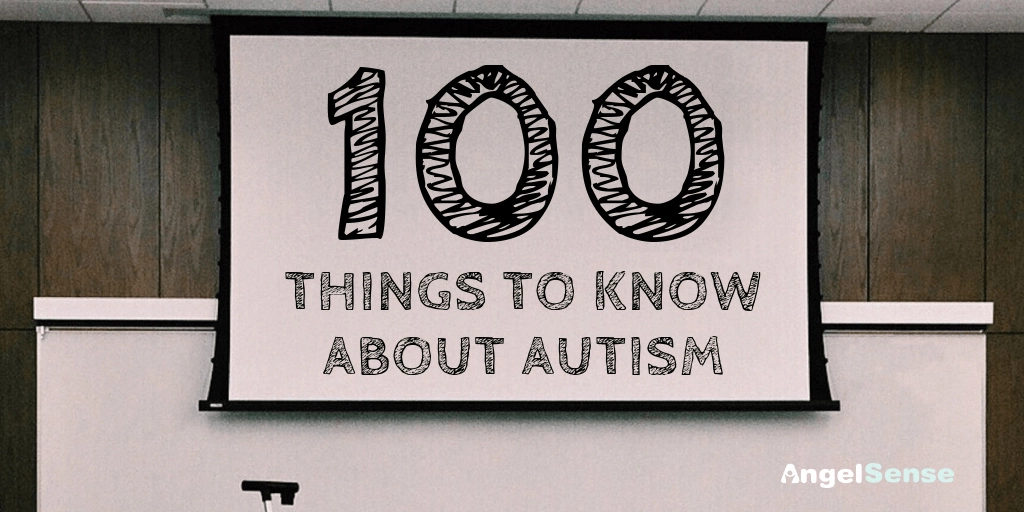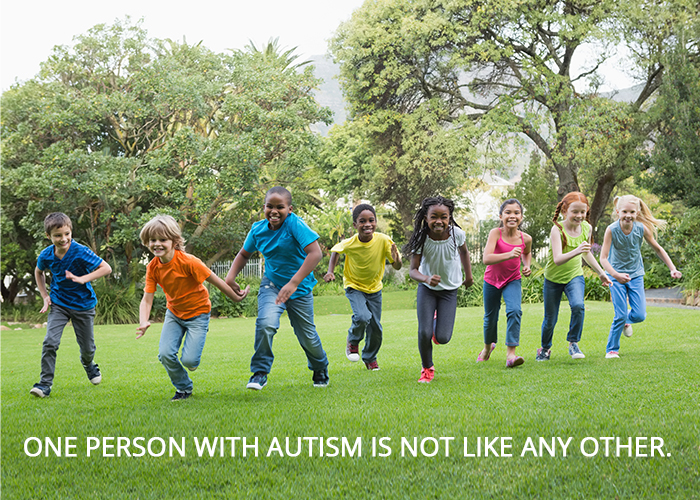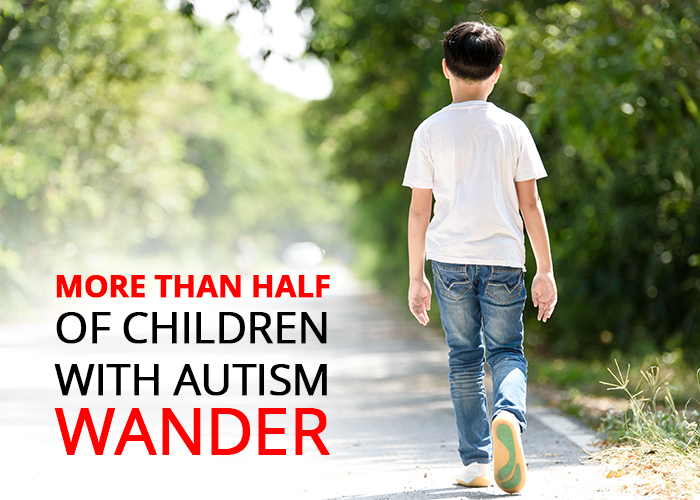100 Things to Know About Autism
Updated on March 11, 2024
As autism parents we know there is always more to learn about the wonderful children that have touched our lives, especially when every child is so unique. The autism spectrum is incredibly broad, which is why this list of 100 things to know about autism is so important.
1. Autism was first described by Dr. Leo Kanner in 1943.
2. Autism was originally associated with schizophrenia.
3. Autism is derived from the Greek word “autos” meaning self. This translates loosely to “alone.”
4. It is estimated that autism affects 1 in 68 children.
5. A recent study has suggested that the numbers could be closer to 1 in 36 children in the U.S.
6. Boys are more likely than girls to have autism, with an estimate of 1 in 42 boys.
7. 1 in 189 girls is diagnosed with autism.
8. Approximately 100 people are diagnosed with autism every day in the U.S.
9. 70 million people worldwide have a diagnosis of autism.
10. Autism is one of the fastest developing disorders in the U.S.
11. Autism is more common than childhood cancer, diabetes, and AIDS combined.

Early intervention is crucial
12. Early intervention is crucial
13. If you suspect your child has autism, the most important thing you can do is get your child screened as early as possible.
14. New Jersey has the highest rates of autism in the U.S.
15. Autism is one of the most under-funded developmental disorders.
16. In children with autism, the amygdala (the area of the brain that handles emotions) is 13% larger than children who do not have an autism diagnosis.
17. Children with autism may have reduced sensitivity to pain but increased sensitivity to sensory stimulation such as touch and sound.
18. There is no medical cure for autism.
19. There are strong genetic links to autism.
20. Mutations on chromosome 16 have been tied to autism.
21. In families that have a child diagnosed with autism, the chances of a subsequent child having a similar diagnosis is 5%, or 1 in 20.
22. If one identical twin has a diagnosis of autism, there is a 90% chance that the other twin will develop an autism spectrum disorder as well.
23. A diagnosis of autism can range from mild to severe.
24. There is no medical test that can detect autism.
25. Several behavioral tests are used to determine a diagnosis of autism.
26. It was originally believed that autism was a symptom of bad parenting.
27. Vaccines do not cause autism.
28. Autism Awareness Day is April 2.
29. Parents of children with autism must work closely with schools to develop individualized education plans (IEPs) to ensure their children receive proper education.
30. An IEP can include accommodations like extra time for testing, a quiet place for testing, and alternative forms of communication and evaluation.
31. 1% of the world population is diagnosed with autism.
32. Autism is a hidden disability. You can’t always see the symptoms.
33. Girls with ASD – particularly Asperger’s or High Functioning Autism – often go undiagnosed and are less likely to receive early interventions.
34. With early intervention and treatment, symptoms of autism can be greatly improved.
35. The earlier that a child with autism receives treatment, the better their prognosis is.
36. Because early intervention is so critical, knowing the early signs of autism – lack of emotional expression, lack of eye contact, lack of babbling – in infants can help ensure the best outcomes.
37. Many celebrities, like Sylvester Stallone, have helped raise awareness about autism after having a child on the spectrum.
38. Most individuals diagnosed with autism will need support and services for the rest of their lives.
39. Cost of lifelong care can be reduced by two-thirds with early intervention services.
40. Signs of autism can be detected as early as 6-18 months.
41. Toddlers may exhibit signs of autism such as avoiding eye contact, not responding to their name, engaging in repetitive movements, or playing with toys in unusual ways.
42. Mozart had autism.
43. Children with autism typically prefer solitary play.
44. Children with autism struggle with joint attention and this can impact their learning.
45. Autism is a bio-neurological developmental disability that appears before a child is 3 years old.
46. The average age of diagnosis for autism is 4 years old.
47. It is common for diagnosis to be missed in childhood completely and not be discovered until adulthood.
48. Many children with autism benefit from structured routines and advance notice to changes in their schedules.
49. African-American and Hispanic children are diagnosed later in life in comparison to Caucasian children.
50. ASD affects children of all racial, ethnic, and socioeconomic groups.
51. Autism affects social development, communication, and cognitive functioning.
52. Approximately 50% of children with autism are considered non-verbal.
53. Non-verbal individuals with autism can still communicate.
54. Being nonverbal does not mean a child with autism has a low IQ
55. Some children with autism have cognitive impairments, whereas other children with autism have normal or above-average IQs.
56. Just because a child with autism isn’t looking directly at you, doesn’t mean they aren’t listening.
57. Children with Asperger’s Syndrome often struggle as teens because they miss social cues and have difficulty connecting with peers.
58. Children with autism can succeed in the classroom, the workplace, and in their overall environment.
59. Individuals with autism struggle to process their own emotions and understand the emotions and nonverbal cues of others.
60. It is a myth that children with autism are not affectionate.
61. Individuals with autism may not display interest in social interaction, but it is a myth that all individuals with autism do not want social interaction.
62. Hidden social rules often must be taught to those with autism.
63. Stanley Kubrick had autism.
64. Social stories have proven effective for helping to teach children with autism about social rules.
65. Children with autism experience various medical problems such as allergies, epilepsy, feeding disorders, and sleeping disorders to only list a few.
66. Anxiety and depression is common in children with autism.
67. Between 30%-50% of those diagnosed with autism have seizures.
69. More than half of children with autism wander.
70. Of the children with autism who wander, over one-third of them will require emergency attention.
71. Drowning is the leading cause of death among children with autism.
72. Hand-flapping and rocking are stereotyped behaviors of autism that are not present in all children with the diagnosis.
73. Resistance to change is a common characteristic of people with autism.
74. The most effective treatments for autism include Applied Behavior Analysis (ABA), physical therapy, and occupational and speech therapy.
75. Many individuals with autism have key strengths that can be used to encourage success throughout life.
76. Siblings of children with autism experience unique stresses that require support and understanding.
77. Chelation therapy is a popular treatment alternative (the removal of mercury from the body), but it has not been proven to be safe or effective.
78. 35% of young adults with autism do not have a job or attend postgraduate classes after high school.
79. Hans Christian Andersen, children’s author, had autism.
80. An autism diagnosis used to be separated into distinct categories, such as Pervasive Developmental Disorder and Asperger Syndrome
81. In 2013 the different development disorders related to Autism were combined into one disorder, Autism Spectrum Disorders
82. Dr. Temple Grandin is famous for her work in animal behavior, and attributes her success to autism
83. In 2017, Sesame Street introduced a character with autism named Julia to spread awareness to young viewers
84. Research has shown that dogs improve the quality of life for children with autism, encouraging independence and safety, and reducing aggressive behavior.
85. It is believed that Albert Einstein, Isaac Newton, and Andy Warhol were on the autism spectrum.

86. Autism does not define who a person is or will become
87. One person with autism is not like any other.
88. Assuming that all individuals with autism have “rain-man” abilities is a harmful stereotype.
89. The portrayal of an autistic individual in the movie Rain Man is one of the most famous but least accurate.
90. “Obsessions” or “fixations” are often helpful or very important to individuals with autism, and should be labeled something more appropriate, like “passions.”
91. Individuals with autism will offer honest answers, regardless of whether it is socially appropriate.
92. Children with autism are 50% more likely to be the target of bullying at school.
93.Children with autism often lack the support from schools that parents wish they had.
94. Schools still attempt to take a broad approach to children with autism, despite the need for individual consideration.
95. Those with autism are more likely to have good memory because of their attention to detail.
96. Individuals with autism are less likely to judge others based on their disinterest of societal expectations.
97. Individuals with autism are not defined by their diagnosis.
98. Individuals with autism need acceptance as much as they need awareness.
99. Being nonverbal at age 4 does not mean children with autism spectrum disorder will never speak. Research shows that most will learn to use words and nearly half will learn to speak fluently.
100. Many people with autism spectrum disorder are successfully living and working and contributing to the well being of others in their local communities. This is most likely to happen when appropriate services are delivered during the child’s educational years.
There are no limits to the spectrum of what autism can look like, and even this list of 100 things to know barely scratches the surface. Nonetheless, it’s so important that we keep moving forward to provide the best care to these gifted children and recognize that children with autism have more to teach us than we realize.
Get peace of mind from AngelSense, the groundbreaking AI-based assistive technology designed to enhance safety and peace of mind for individuals with special needs and their families. Our solution ensures you stay connected with your loved ones, empowering a higher level of independence while maintaining safety. Learn more about how AngelSense can make a difference for your family.


I would luv this,gor my son,who’s 17,autistic
Greater awareness about autism, https://fdna.health/autism , is important in terms of improving the accuracy of diagnosing this spectrum disorder. The more we know about its possible causes or contributing factors to its cause, the better too. More research and funding is needed into this.
My grandson is 6 has autism and is non Verbal. Any tips and ideas to improve his learning experiences would be amazing! He is so special!
Try AngelSense Risk Free
FREE DEVICE
See PlansSession Changed
Your session has changed. Please close this tab.